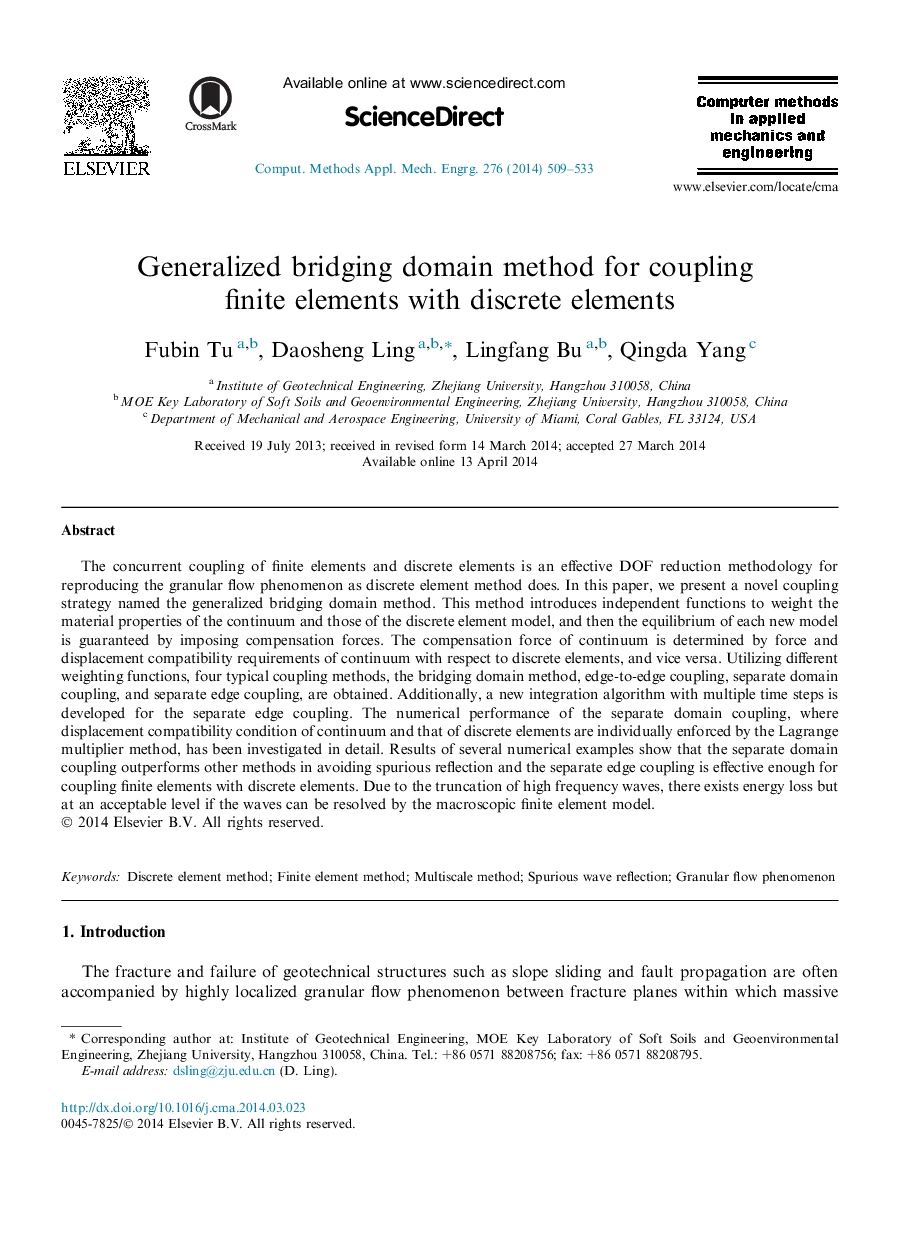| کد مقاله | کد نشریه | سال انتشار | مقاله انگلیسی | نسخه تمام متن |
|---|---|---|---|---|
| 497944 | 862951 | 2014 | 25 صفحه PDF | دانلود رایگان |
The concurrent coupling of finite elements and discrete elements is an effective DOF reduction methodology for reproducing the granular flow phenomenon as discrete element method does. In this paper, we present a novel coupling strategy named the generalized bridging domain method. This method introduces independent functions to weight the material properties of the continuum and those of the discrete element model, and then the equilibrium of each new model is guaranteed by imposing compensation forces. The compensation force of continuum is determined by force and displacement compatibility requirements of continuum with respect to discrete elements, and vice versa. Utilizing different weighting functions, four typical coupling methods, the bridging domain method, edge-to-edge coupling, separate domain coupling, and separate edge coupling, are obtained. Additionally, a new integration algorithm with multiple time steps is developed for the separate edge coupling. The numerical performance of the separate domain coupling, where displacement compatibility condition of continuum and that of discrete elements are individually enforced by the Lagrange multiplier method, has been investigated in detail. Results of several numerical examples show that the separate domain coupling outperforms other methods in avoiding spurious reflection and the separate edge coupling is effective enough for coupling finite elements with discrete elements. Due to the truncation of high frequency waves, there exists energy loss but at an acceptable level if the waves can be resolved by the macroscopic finite element model.
Journal: Computer Methods in Applied Mechanics and Engineering - Volume 276, 1 July 2014, Pages 509–533
